do a little, save a lot
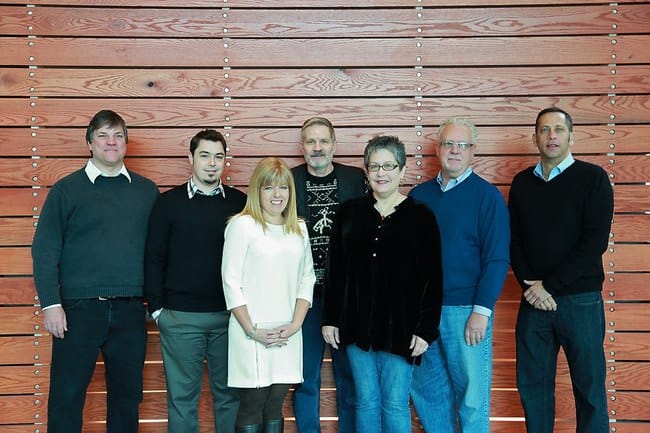
the cf3 ask the experts panel: lou batsch, chris magee, susan rissover, david smith, judith kuhlmann, fritz kuhlmann, and TV personality and producer Jay Shatz. photo by wendy magee photography
The cf3 Ask the Experts Panel Discussion last week touched on a lot of different topics, but we barely had time to scratch the surface of a big issue with midcentury homeowners – energy efficiency. Energy costs in the 1950’s and 60’s were not really an issue. Keeping your house cool in the summer – before central air conditioning was widely used was probably the biggest challenge. In the winter, you just cranked your heat up.
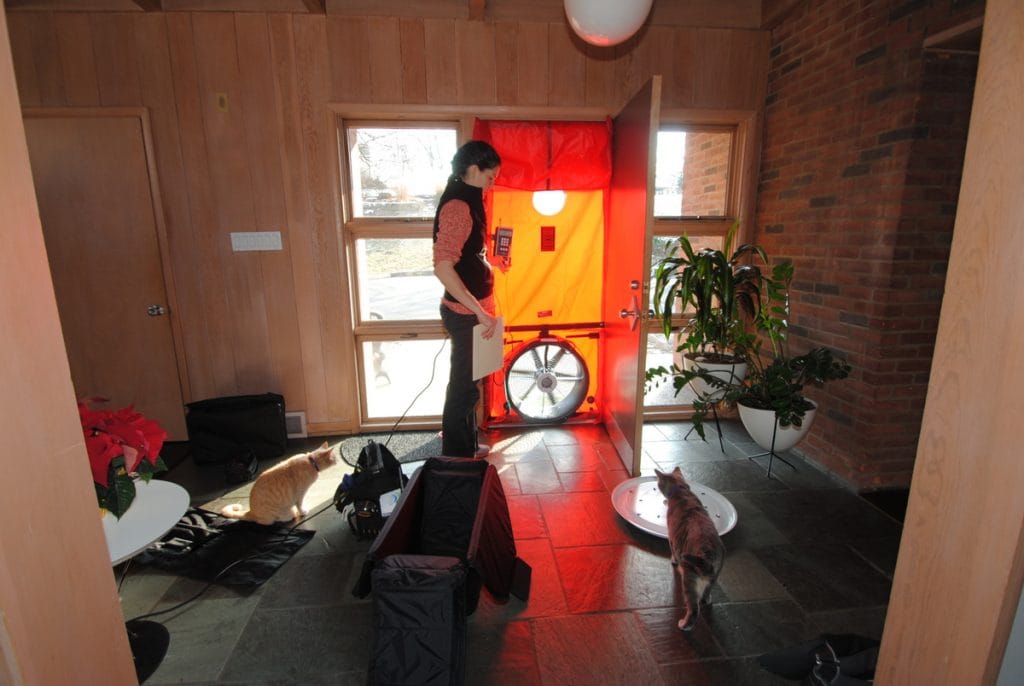
our kitties harper and miller are very curious watching katey setting up the blower door test during our energy audit.
When we listed the Garber house last fall, we were inspired by their recent energy audit. The house already had a lot of energy improvements by the previous owner (insulated windows, extra roof insulation), and the subsequent owners wanted to kick it up another notch. We called the non profit Greater Cincinnati Energy Alliance and scheduled our own audit. We were kind of clueless as to what else we could do to improve our efficiency and comfort, so we turned to the pros.
Much to our surprise (and relief), our original 1956 thermal pane Anderson windows were not a significant source of air infiltration. But there were many other culprits. Our rim joist was not sufficiently insulated. Honestly, I did not even know we had a rim joist. We also sealed our exposed ductwork with mastic and put a new vapor barrier in our crawl space. Our new roof will have added insulation as well. And as icing on the cake, the government provided matching funds for most of the recommended improvements – lots of little things that will hopefully add to our overall comfort and energy savings for years to come.
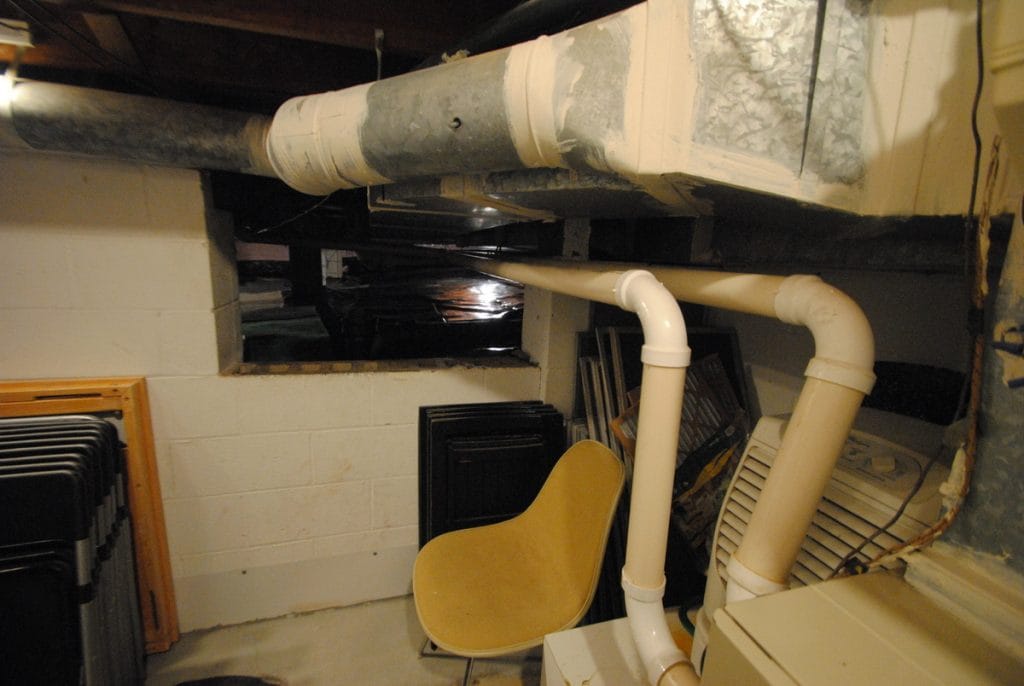
our mastic sealed ductwork.
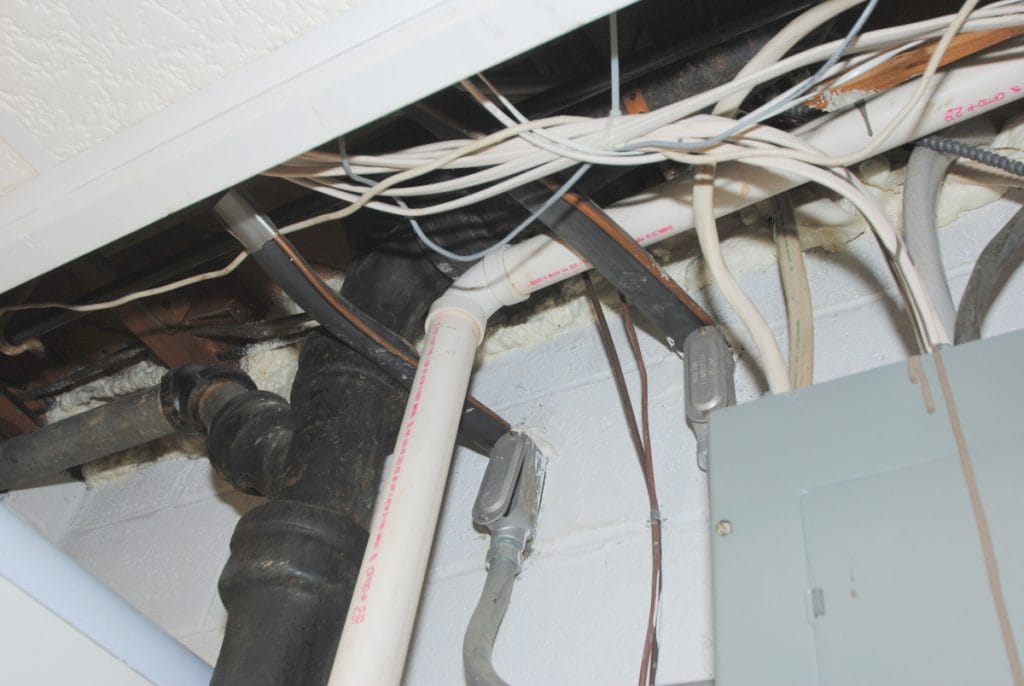
this is what an insulated rim joist looks like!
overall, between the first blower door test and the second after the improvements, we experienced a 30% reduction in cfm., which is greater than the desired result!Our favorite improvement by far is our new LED recessed lighting. I did not realize that recessed lights are a major source of air infiltration (especially in a post and beam house like ours with no insulated attic space)! Not to mention that they are energy hogs, burning 65 or 75 w incandescent bulbs. I am not a fan of the quality of light from CFL bulbs (and was resisting the conversion), so was thrilled to hear that there was an alternative that burns at only 9.5 w, and lasts for 20+ years. The initial outlay was big, but the quality of light is outstanding. They were easy to install in our existing cans, are crisp and white and look fantastic.
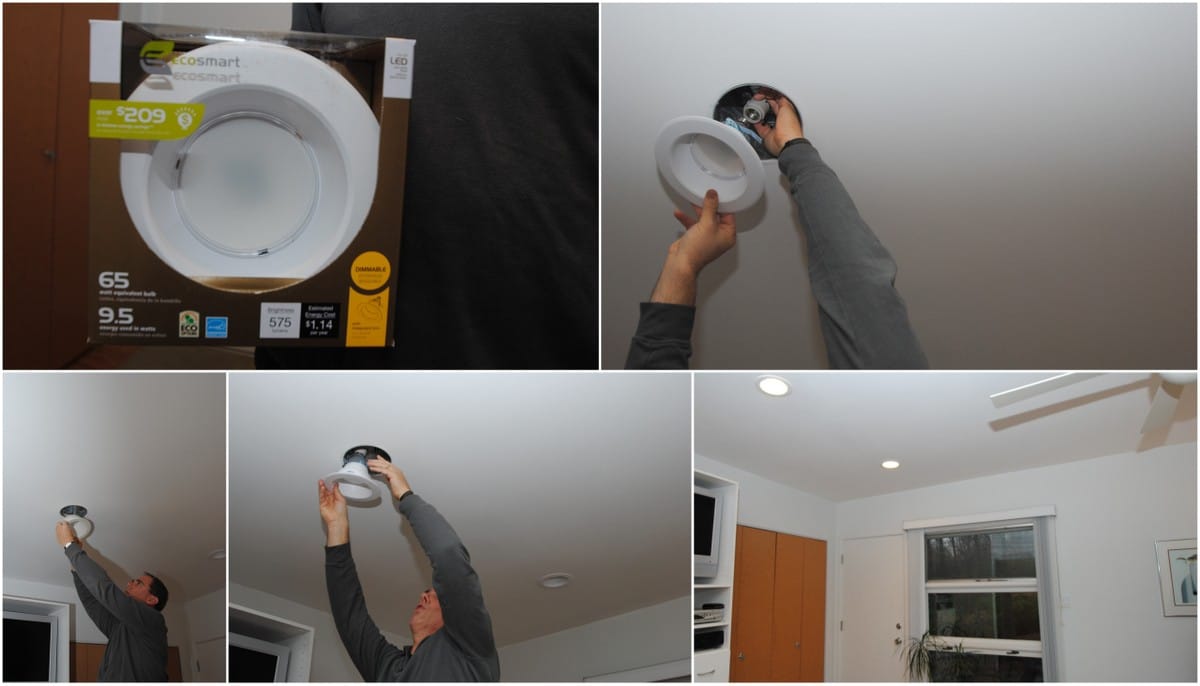
we ordered the lights on amazon, and arlen was able to retrofit out existing can lights in minutes. we even have them over our bathroom sinks and the lighting is great for putting on make up (the true test)!
The overall recommendation from the cf3 ask the experts panel was to consult professionals who in the long run can save you money. In this case, we did just that and were very pleased with the results.
if you missed the cf3 ask the experts panel and would like to watch it, click here. It’s about an hour of informative suggestions for midcentury homeowners and collectors. Thanks to Allie and Tyler Weaver for recording it.
featured publications
research + articles
- thesis on the work of architect james (jim) alexander melissa marty, 2002
- benjamin dombar various sources
- abrom dombar various sources
- woodie garber various sources
- rudy hermes various sources
- dick calef various sources
- carl strauss + ray roush various sources
- and the rest
modern books
- 50 from the 50s: modern architecture and interiors in cincinnati udo greinacher, elizabeth meyer, susan rissover, patrick snadon, margo warminski, 2002
- atomic ranch midcentury interiors michelle gringeri-brown (author), jim brown (photographer), 2012
- implosion elizabeth garber, 2018
- charley harper, an illustrated life, todd oldham & charley harper, 2007
- about design: insights and provocations for graphic design enthusiasts, gordon salchow, 2018
- cincinnati's terrace plaza hotel: an icon of american modernism, shawn patrick tubb, 2013







